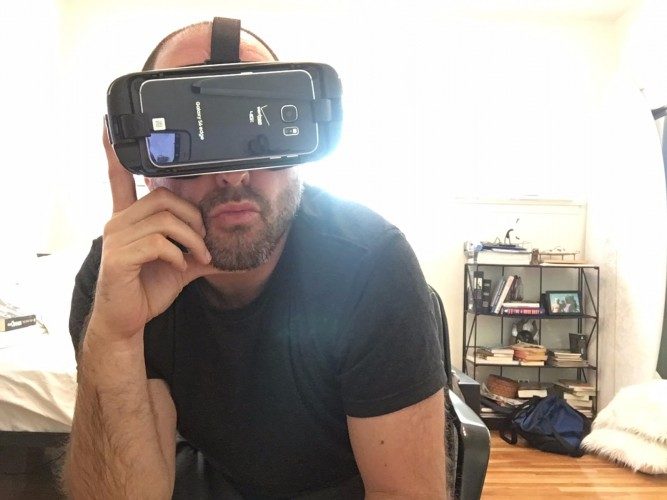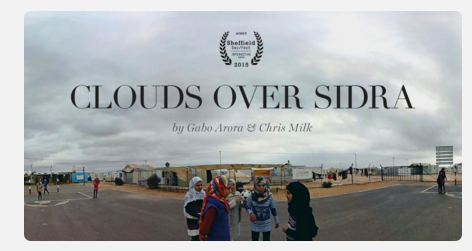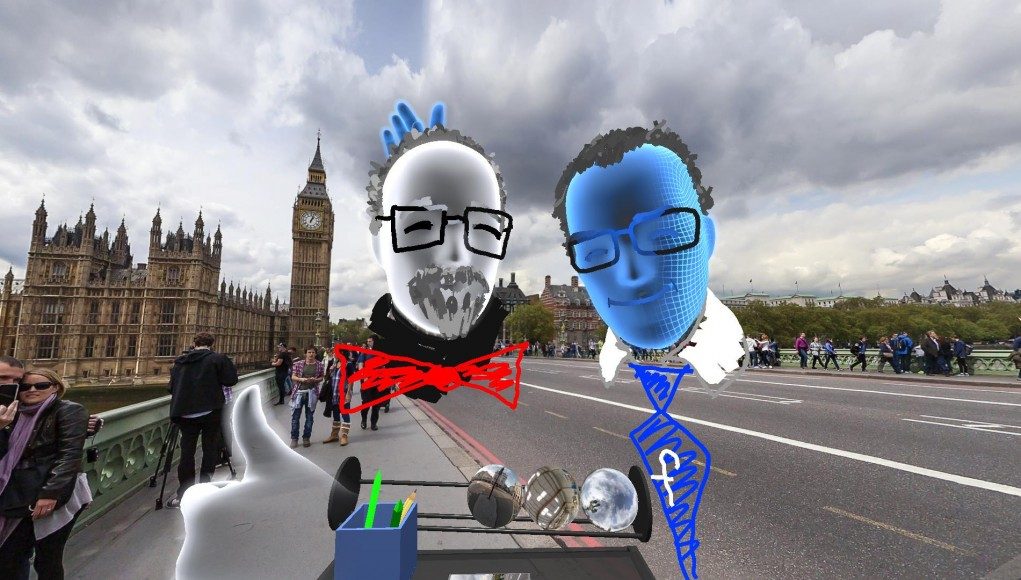Let’s face it, if there is one VR category that has the most potential, the most controversy, and admittedly the most goofiness, it’s social VR.
Ben is an active investor in VR and digital media, and is based in Los Angeles. Ben was an early Google and YouTube exec, and has founded and led multiple venture-backed video startups. Get more of his insights and interviews here.
We all have wild fantasies of running around in strange digital universes. We all want to live and breathe in virtual space. It’s the dream of all geeks everywhere. Social VR feels like it’s naturally next. And when you talk to people about social VR within the industry, everybody is really sold. But it’s one thing for all of us insiders to talk with each other about social VR being cool, and it’s another to actually see consumers embrace and use these spaces.
So far, results have been mixed at best. Even though the Rift and Vive just shipped (sorta), there is enough data within the space to talk about if it’s working, and why.
I tracked AltspaceVR, Oculus Social, and vTime five times per day over a week to get a rough sense of how many people are living in VR on average at any given time:
AltspaceVR: ~45 people
Oculus Social: ~38 people
vTime: ~20 people
Note: These figures don’t include users in private spaces which can’t be seen.
To be clear, we’re not talking about a huge number of people in the space. Remember, there is no viral coefficient at the moment. It’s hard to get my real world friends into these apps. I can’t spam my entire address book to get everybody through the door to Oculus Social. AltspaceVR supports some ‘linking’ functionality which can direct people into a particular room (see here), but it’s not the sort of snappy process we’re used to when sharing a link to a photo or video where the recipient can consume it instantly; that means that whenever I’m asking my friends to jump into one of these spaces, what they find had better be worth it.

As an active investor and advisor in the VR space, I tend to look for killer use-cases when looking at new investments. When I’ve had the honor of talking to the legends of Silicon Valley, the people who have seen these huge platform shifts before, they always talk about creating monster use-cases. When I had breakfast with a billionaire tech executive who will go unnamed, he told me he’s completely out on VR until he sees the killer use-case arise. It won’t happen for him until we figure it out.

Social VR feels like the place where we’ll find it, but ‘social VR’ is too broad to be a killer app. That would be like saying ‘Games’ are the killer app for a console, but that’s nonsense; we need to find which game—the specific hyper-compelling use-case—is the killer app for social VR.
So what are the use-cases? Based on my time in the social VR universe, here are the main use cases I discovered:
- Games and watching video together
- Avoiding loneliness
- Escape
- Group problem-solving
- And yes, bullying, and some sexual harassment
Yes, bullying is already an issue, I saw it myself inside some of these spaces. This is admittedly a problem for any online social space (not just VR) where users are pseudo-anonymous. This can combated with tools to block harassers and create invite-online space (which some of these platforms already employ), and by using real-life identities.
It has become clear that if Social VR is going to work we need a unique use-case and unique human expression. The biggest platforms enable the audience to uniquely express themselves, and use that expression to build giant platforms. From YouTube to Snapchat, we’ve seen the same formula play out time and time again. Snapchat tapped into the human need to gossip, and the platform is exploding.
The main use-case for social VR that Facebook and others are promoting: Don’t be lonely. In the cold wasteland of virtual reality, you are not alone.
But take a temperature check for a second. Do you feel more lonely or less lonely in these VR spaces?
Exactly. We actually feel more lonely in these spaces right now.
Every time I ended my sessions in AltspaceVR, Oculus Social, or vTime, I felt slightly depressed. Like I was letting down the human race a little bit. I wasn’t uplifted or inspired. I wasn’t connected.
We all know that the magic use-case has to be out there. Take a look at China. They already have 10 million VR headsets sold. Perhaps not coincidentally, Palmer Luckey is on record saying people will begin living in VR in areas of the world where the virtual world is nicer than the real world very soon.

And toward the end of my week of social VR experiments, something almost imperceptible happened. Most people would miss it. In fact, I almost skipped over it myself. I saw two complete strangers in Oculus Connect bond for a few minutes over their love of prank videos. The two guys started out quite cold and polite with each other, and then within a few minutes were laughing and cracking jokes together. It was authentic communication. A connection happened.
Wait a second, what was that?!
This puzzle bothered me for days. And sitting there having breakfast and cracking jokes with my one year old little girl, it finally occurred to me. Loneliness is answered when humans are truly seen and embraced for who they are. It is when people reveal themselves and become vulnerable that real sharing begins.
This makes intuitive sense, and it makes internet high-stakes business sense. After all, Facebook cleaned Myspace’s clock because Facebook insisted on real-life identity. At the time, that just was not done. Before you knew it, we all collectively felt safer when sharing ourselves and our personal emotion and data with.

From a content perspective, the same was true for YouTube. The monotonous videos of flying over the Grand Canyon were not exciting; rather, it was this new ability for unknown people to share the deepest parts of themselves with the public that caused a stir. When I worked at YouTube, it was the videos of people sharing their hearts and souls that routinely beat out even the Star Wars and music video clips.
Now take a look at the current top VR apps. There is a common thread through the apps or 360 videos that have done well. That thread is story, empathy, and people sharing very human experiences. Chris Milk gets this idea; look at VRSE’s content—nearly every piece is about an emotional human experience coming to life.

It’s articles like this Fast Company piece that miss the point. Getting social VR off the ground is not about enriching the presence of the spaces we inhabit. It is about empowering humans to be even more human around each other. It’s ironic that for virtual reality to really succeed we will need to find more of what makes us human.
Over the next six months, it’s imperative that all of the major VR platforms give us an opportunity to share who we really are with each other. While counterintuitive, sharing social content today helps reveal to ourselves who we might be deep down inside. I’m craving the ability to share short 360 videos from my social VR sessions with my real life friends on Facebook, Instagram, and Snapchat. They will see a ‘new me’ as an avatar, but an avatar with my soul, my sense of humor, and my (many) flaws.
It’s easy to talk about creating use-cases, but it’s tough to actually execute. The social VR companies have their work cut out. If I was starting a rival social VR platform today, I would immediately:
- Use real-life identity
- Create content sharing features (video, image, and sound)
- Create VR forums around identity and emotion-inspiring issues
- Focus on pre-established friend-links
We can’t be too far away from some of these concepts, right? I’ve been impressed with the Spectacle app for Gear VR. It’s the most basic of the photo sharing apps that feature filters. To be frank, it feels pretty grade school in its sophistication level. But it’s one of the few Gear VR apps that allows people to express themselves in an easy, fresh way. That’s progress right now for VR.
I’m still very bullish that we’ll be running around in strange digital universes soon. And in the social VR platforms that take off we won’t just be running around alone, we’ll be connecting and seeing people sharing their true selves.








